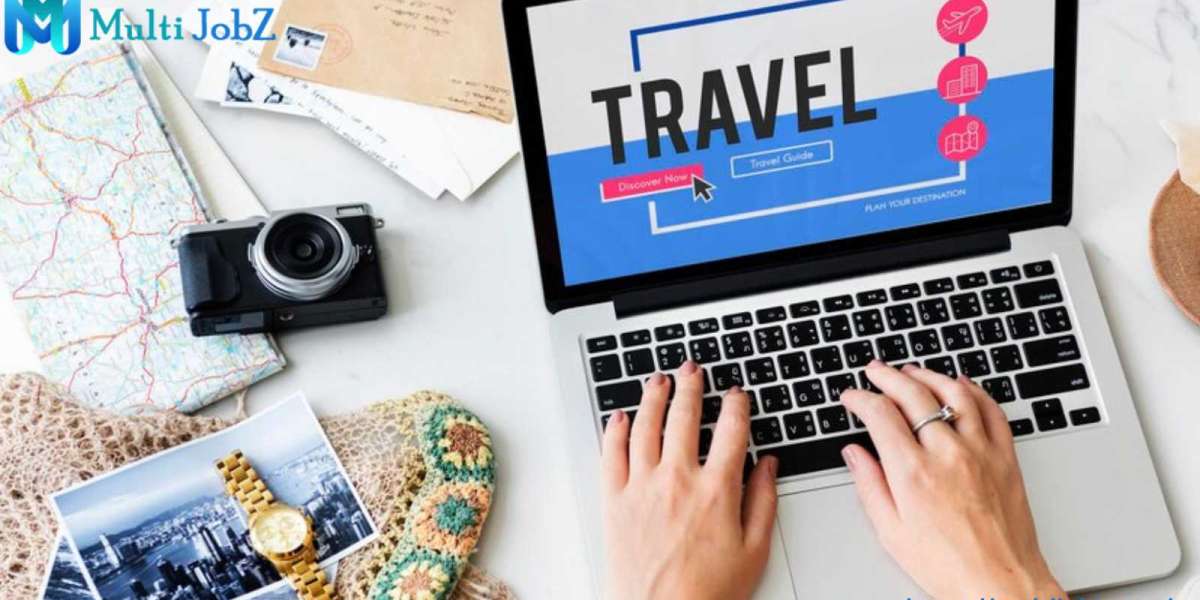Corporate travel is an integral aspect of modern business operations, enabling organizations to expand their horizons, forge new partnerships, and foster global collaboration. However, the world of corporate travel is dynamic and often challenging, requiring a strategic approach to ensure a seamless and productive experience for employees. In this article, we'll explore the nuances of corporate travel and provide strategies to enhance the efficiency and effectiveness of business journeys.
The Importance of Corporate Travel:
Corporate travel plays a pivotal role in the growth and success of businesses. It facilitates face-to-face interactions, crucial for relationship-building, negotiations, and team cohesion. While virtual communication tools have advanced, there's no substitute for in-person meetings when it comes to sealing deals or strengthening partnerships.
Key Challenges in Corporate Travel:
- Cost Management: Budget constraints often necessitate cost-effective travel solutions without compromising the quality of the trip.
- Time Efficiency: Balancing travel time and work commitments is crucial. Long layovers and extended travel periods can impact employee productivity.
- Health and Safety: Ensuring the well-being of employees during travel is paramount. This involves considerations for health, safety, and emergency protocols.
- Compliance and Policy Adherence: Organizations must navigate complex travel policies, compliance regulations, and reimbursement procedures.
Strategies for Successful Corporate Travel:
- Strategic Planning:
- Define Objectives: Clearly outline the purpose of the trip. Whether it's attending a conference, meeting clients, or exploring new markets, understanding the objectives helps in planning effectively.
- Budget Allocation: Set a realistic budget, considering travel expenses, accommodation, meals, and incidental costs. Leverage travel management tools to track and control expenses.
- Technology Integration:
- Travel Management Systems: Implementing travel management platforms streamlines the booking process, provides real-time updates, and facilitates expense tracking.
- Communication Tools: Equip travelers with communication tools to stay connected with the office, clients, and team members, ensuring work continuity.
- Health and Safety Measures:
- Travel Insurance: Mandate comprehensive travel insurance coverage for employees to address health emergencies and unexpected events.
- Wellness Programs: Promote employee well-being by offering wellness initiatives, such as pre-travel health check-ups and stress management resources.
Connect with Our Dedicated Team: https://multijobz.com/contact-us/
- Accommodation Selection:
- Proximity to Business Hubs: Choose accommodations close to business hubs or meeting locations to minimize travel time and enhance convenience.
- Corporate Rates: Partner with hotels to secure corporate rates, reducing costs and ensuring consistent quality for employees.
- Travel Policy Education:
- Employee Training: Conduct sessions to educate employees on travel policies, emphasizing compliance, expense reporting, and emergency procedures.
- Accessibility: Make travel policies easily accessible, ensuring that employees can refer to them when needed.
- Flexible Travel Options:
- Travel Flexibility: Provide employees with flexibility in travel arrangements, such as the option to extend stays for personal reasons or choose alternative transportation modes.
- Remote Meeting Alternatives: Evaluate the feasibility of virtual meetings, reducing the need for extensive travel while maintaining effective communication.
- Sustainability Initiatives:
- Green Travel Practices: Encourage sustainable travel options, including eco-friendly accommodations, public transportation, and carbon offset programs.
- Virtual Conferencing: Explore virtual alternatives to in-person meetings when feasible, reducing the carbon footprint associated with travel.
- Expense Management:
- Digital Receipts: Implement digital expense reporting tools to streamline the reimbursement process and reduce paperwork.
- Policy Adherence: Use technology to enforce travel policies automatically, minimizing errors and ensuring compliance.
- Risk Management:
- Emergency Protocols: Establish clear protocols for emergencies, including natural disasters, political unrest, or health crises. Ensure employees are aware of the procedures to follow in such situations.
- Monitoring Tools: Utilize travel risk management tools to monitor global events and assess potential risks to travelers.
- Feedback and Continuous Improvement:
- Post-Travel Surveys: Gather feedback from employees about their travel experiences. Use this information to refine travel policies, enhance services, and address any issues encountered.
- Continuous Evaluation: Regularly assess the effectiveness of your corporate travel program, incorporating lessons learned into future planning.
Corporate travel, when approached strategically, can be a catalyst for business growth and success. By addressing challenges head-on and implementing thoughtful strategies, organizations can ensure that their employees embark on journeys that are not only productive but also aligned with the overall objectives of the company. As the business landscape continues to evolve, staying adaptable and leveraging technology and best practices will be key to navigating the complexities of corporate travel successfully.
Contact Us:
- Phone: +91 8105348110
- Mail: multijobz@outlook.com








